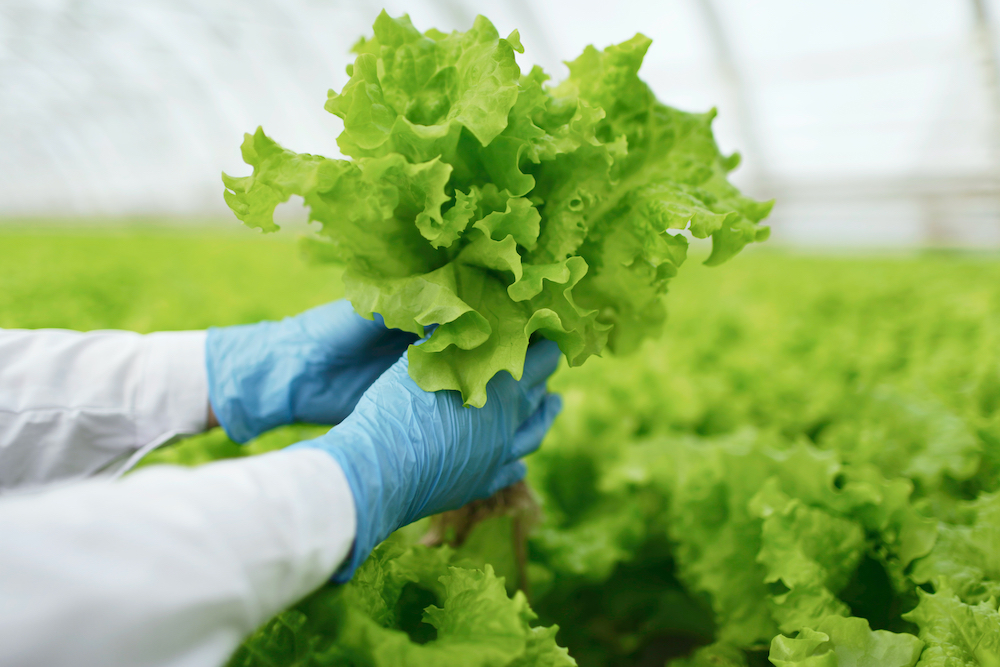
My Commodity Tested Over Tolerance. What Do I Do Now?
Several years ago, we published an article about microbiological testing. It explained what clients should do if their sample tests positive. The article was well received, and so, we thought it might be a good idea to examine the same issue with regard to chemical, rather than microbiological testing.
Before we begin, let’s consider some general information. Chemical testing of fresh produce is intended to ascertain whether there are chemical pesticides in the food. The term “pesticide” refers to chemicals used in agriculture – e.g. herbicides, insecticides, and fungicides to control pests. Every commodity (or commodity group, such as berries, citrus fruits, leafy greens, etc.) has an MRL – a Maximum Residue Limit (in the U.S. we also use the term “tolerance,” and tolerance levels are established by the U.S. Environmental Protection Agency). Different countries and different commodities have different MRLs, but in order for food to be sold legally, that food must have tested under the MRLs for that commodity or commodity group based on the laws of either the country of origin, the country of destination, or both.
Trace amounts of chemicals in food are food safety hazards, but it is important to note that pesticide residues in food pose a chronic risk to the consumer, as opposed to the acute risk presented by pathogenic contamination revealed in microbiological testing. So, while it may not be safe to eat foods that exceed MRLs, the health dangers of continued exposure to pesticide residues will likely develop over long periods of time. Microbiological pathogens consumed in food, on the other hand, present an immediate, acute risk to the consumer – one that could result in illness or even death only a short time after consumption. In this sense, foods that test over tolerance for pesticides are generally understood to present food producers with legal rather than safety issues.
So, what happens when the sample you sent to your pesticide residue laboratory comes back over tolerance for a particular type of chemical contamination?
There is a “label” for each crop and each pesticide that instructs users about how the pesticide should be handled during the application. Pesticide labels should always be followed. It is very possible that your sample could test over tolerance for a chemical that you did not knowingly apply to the commodity you were growing. There are several possible explanations for this.
First, a farmer’s field is not a controlled area, so if your neighbor happens to spray a pesticide on his or her field, it is possible that the spray will “drift” onto your crops. “Drift” is especially problematic if a neighboring field is producing a different commodity or commodity group and, therefore, the pesticides are likely different from those you might be using on your commodity. Organic farmers have to be particularly concerned with drift.
Another possibility is that unbeknownst to you the irrigation water you are using on your crops is actually contaminated with chemicals, and those chemicals have now made their way into the food itself. A third possibility is spray tank cross-contamination. Sometimes, a tank that is used in spraying is not cleaned out sufficiently, and residual chemicals that were sprayed at an earlier time have now contaminated your food. A final possibility is that mislabeled or misused chemical pesticides may have contaminated your products.
So, if your contaminated commodity tests over tolerance, what are your options? Chemicals degrade over time, so if a sample taken from a field tests over tolerance, you can wait for a period of time, then test another sample of field product to see if the commodity is now under tolerance. Sometimes, a pesticide residue test is required for a farm audit. It is important to know that any sample that tests over the MRL will result in an automatic failure on the audit. However, it is possible that by waiting until your sample retests under the MRL, the automatic failure can be reversed. Similarly, if you’ve conducted finished product testing, and your product has been placed in cold storage, you may also be able to wait and retest again to see if you sample is under MRL. This is a better possibility if your commodity happens to have a longer shelf life.
It is possible that if the chemical detected in your food is over tolerance in the country in which it is grown, it may be under tolerance in a different country, and you may be able to find a buyer in that other country (this will likely result in you getting less money for your product). It is commonplace for food producers to ask their laboratory to check the MRLs for multiple countries when they conduct pesticide residue testing.
If food is imported into the United States, the FDA may stop a shipment at the border to conduct pesticide residue testing. If your product tests over tolerance for US MRLs, the FDA will commence FDA Detention. In order for your product to be allowed across the border, you will have to conduct a series of detection tests with a certified laboratory such as PrimusLabs, and if five consecutive test batches test under tolerance, your product will be released to cross the border and continue on to its destination.
What about the worst-case scenarios? If your product tests over tolerance after it has already made it to its destination, you will be forced to conduct a recall of the product. If your product has not been harvested or if it is in cold storage when a sample tests over tolerance, you may be forced to destroy the product.
If you have any further questions about pesticide residue testing, do not hesitate to contact PrimusLabs at dispatchgroup@primuslabs.com or by calling 805.922.0055.




